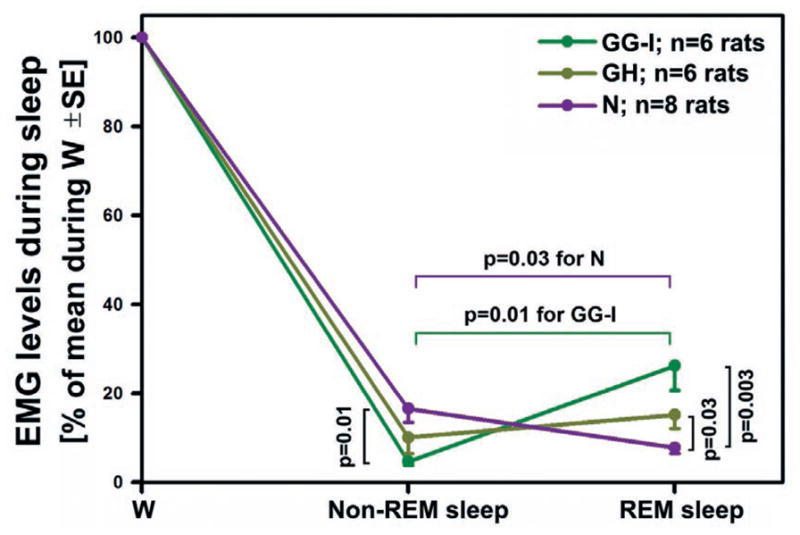Fig. 4.

Mean GG-I, GH and N EMG levels during non-REM sleep and REM sleep normalized by the mean activity during W. The levels differ significantly among the three muscles during both stages of sleep. During non-REM sleep, GG-I EMG is minimal (atonic) and significantly lower than N EMG. The mean GH EMG level is intermediate between the GG-I and N EMG levels. During REM sleep, N EMG is minimal, whereas GG-I EMG is largest and GH EMG retains an intermediate position. N EMG declines significantly between non-REM sleep and REM sleep, which is an opposite change to that for the mean GG-I. GH EMG shows only a small trend towards increase during REM sleep compared to its mean level during non-REM sleep because it is slightly elevated above the level of atonia during non-REM sleep and when this tonic activity disappears during REM sleep it is replaced by a moderate level of twitching. During REM sleep, both the mean GG-I and GH EMG levels are significantly higher than the N EMG due to the low level of phasic activity in the latter.
